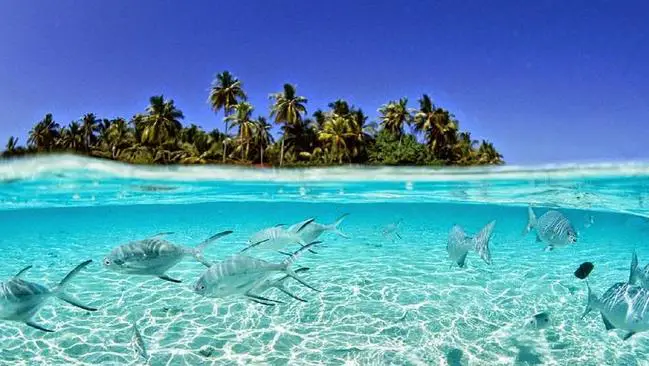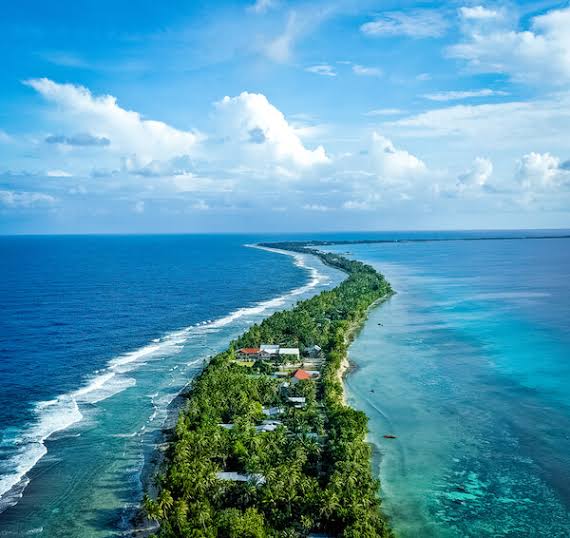1. Overview of Tuvalu

Nestled in the west-central Pacific Ocean, Tuvalu is a hidden gem waiting to be discovered. This small island nation, formerly known as the Ellice Islands, is situated approximately halfway between Hawaii and Australia. Its unique location on a ring-shaped coral reef surrounding a lagoon makes it a breathtaking oasis. However, the future of Tuvalu is uncertain, as it faces the imminent threat of disappearing completely.
The Threat of Disappearance
With a population of around 12,000 inhabitants, Tuvalu is not only the least visited country in the world but also one of the smallest. This nation, with its own currency, attracts just over two thousand tourists annually. However, the challenges it faces extend beyond low tourism numbers. Tuvalu’s very existence is at stake due to rising sea levels caused by climate change. Two of its nine islands are already on the verge of being swallowed by the ocean, and the entire nation is at risk.
2. The Hidden Gem of the Pacific
Location and Geography
Tuvalu’s beauty lies in its geographical location and stunning landscapes. This collection of small islands is surrounded by turquoise waters and lined with dense coconut trees. The average daily temperature ranges from 80-85°F (27-29°C), providing the perfect backdrop for a tropical paradise.
Serene Ambiance and Daily Life
Life in Tuvalu is serene and unhurried. Residents can be seen coasting along the island roads on motorbikes, engaging in the simple pleasures of frying fish, taking naps in hammocks, and enjoying beach campfires under the starry sky. The peaceful ambiance and untouched natural beauty make Tuvalu an ideal destination for those seeking tranquility.
3. The Least Visited Nation in the World
Population and Tourism
Tuvalu’s status as the world’s least visited nation may come as a surprise to many. With just over two thousand visitors each year, this secluded paradise remains largely unexplored. The low tourist numbers can be attributed to the challenges of accessibility and limited international exposure.
Accessibility Challenges
Tuvalu has only one international airport, which was built by the United States Navy during World War II in 1943. Today, it is primarily used by Fiji Airways, further limiting the options for travelers to reach the country. The remote location and lack of direct flights make it a less accessible destination compared to other popular tourist spots.
4. The Peril of Rising Sea Levels
Climate Change and Tuvalu
Tuvalu’s vulnerability to rising sea levels is a direct consequence of climate change. As the global climate continues to warm, the polar ice caps melt, causing a rise in sea levels. This phenomenon poses a significant threat to low-lying islands like Tuvalu, as they are more susceptible to coastal erosion and flooding.
Read More: Palawan Travel Guide: Top Tourist Attractions to Visit
Erosion and Swallowing Islands
Tuvalu’s precarious existence is evident in the erosion and disappearance of its islands. The rising sea levels and increased frequency of storms have led to waves battering the islands from both the east and the west. This relentless assault has already taken its toll, with two of Tuvalu’s islands on the verge of being swallowed by the sea.
5. A Fragile Existence
Coral Attols and Rising Tides

Tuvalu, like many other Pacific island nations, consists primarily of coral atolls. These fragile ecosystems are built on top of submerged volcanoes and are only a few meters above sea level. As the tides continue to rise, these low-lying atolls face the risk of being submerged entirely, rendering them uninhabitable.
Vulnerability to Natural Disasters
In addition to rising sea levels, Tuvalu is also susceptible to other natural disasters such as cyclones and storm surges. These events can cause significant damage to infrastructure and further exacerbate the challenges faced by this small nation. The combination of climate change and natural disasters creates a precarious situation for Tuvalu and its inhabitants.
6. The Future of Tuvalu
International Efforts to Save Tuvalu
Recognizing the urgency of the situation, international organizations and governments have come together to support Tuvalu in its fight against climate change. Efforts are underway to raise awareness, provide financial aid, and promote sustainable development practices. However, the challenges faced by Tuvalu are complex and require global cooperation to ensure its survival.
Read More: Bohol: A Journey to History, Natural Beauty, and Culinary Delights
7. Tuvalu: More Than Just a Disappearing Nation
Rich Culture and Tradition
Tuvalu’s cultural heritage is as vibrant as its natural beauty. The people of Tuvalu have a rich history and a deep connection to their ancestral traditions. Traditional music, dance, and storytelling are integral parts of Tuvaluan culture, showcasing the island nation’s unique identity.
People, Language and Economy
The people of Tuvalu, known as Tuvalans, are warm and welcoming. They primarily speak Tuvaluan and English, with Tuvaluan being the national language. The economy of Tuvalu relies heavily on subsistence agriculture, fishing, and remittances from overseas. While the challenges posed by climate change are significant, the resilience and ingenuity of the Tuvalan people remain steadfast.
8. Conclusion
Tuvalu, the world’s least visited nation, faces a dire future. The threat of disappearing due to rising sea levels is a harsh reality for this enchanting paradise in the Pacific. As the international community rallies to support Tuvalu in its fight against climate change, it is crucial to remember the urgency of the situation. The beauty and cultural heritage of Tuvalu must be preserved for future generations to cherish. Let us unite in our efforts to protect Tuvalu and ensure that it remains a symbol of resilience in the face of adversity.